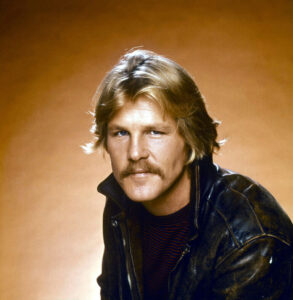These days, Nick Nolte is perhaps best known for portraying tough-talking characters – but he was once a huge sex symbol of his time. Today, the gifted and talented actor has turned 82 years, and I must say that he’s pretty unrecognizable from his 1970s heartthrob days.I have a ton of respect for the remarkable talent of Nick Nolte – he’s definitely one of the greatest actors in American cinema history. I like how his facial features, his sturdy, square jaw structure, his angulus orbital bones and forehead, and the wild hair floating and growing out of control make him look like a powerful, almost barbaric character in a Shakespeare play.
His versatility as an actor, the intensity and the pain behind his eyes – that’s what makes his art so compelling. Nick always gives raw and honest acting performances, and if we look at his credentials, it’s evident that many of us appreciate his acting skills.
In 1991, Nolte won the Golden Globe Award for Best Actor – Motion Picture Drama. He was also nominated for the Academy Award for Best Actor for the 1991 film The Prince of Tides.Nolte’s powerful performances in films such as Affliction and Warrior also earned him Academy Award nominations. But today, the Hollywood actor has changed a lot from his Golden Globe-winning days.

His famous disheveled mug shot in 2002 destroyed much of his reputation. The legal troubles and personal scandals he faced didn’t help either.
For a younger audience, it can be hard to believe that Nolte was the true face and image of the ultimate all-American hero in the 1970s. He was even labeled People magazine’s Sexiest Man Alive.
But how did Nick Nolte become one of the country’s most famous faces?
First of all, Nolte wasn’t much of an actor in high school, according to his football coach in Omaha. As a young student, he was a talented football player – but also a ”skinny, awkward kid with a crew cut.”
According to Nolte himself, he was extremely shy as a kid and never felt comfortable as part of a group. He struggled at school, and it wasn’t until later in life that he was diagnosed with dyslexia.The handsome Nolte, born in Omaha, Nebraska, on February 8, 1941, got his big breakthrough in the TV miniseries Rich Man, Poor Man (1976). Not long after that, he became a household name and an American heartthrob.
However, he started working as a model in the 1960s. One of his most famous shots came while he cut an impressive figure together with Sigourney Weaver for Clairol’s “Summer Blonde” hair coloring campaign back in 1972. According to Eighties Kids, the commercial remains the only time a man has ever appeared on a box of women’s hair dye.Nevertheless, Nolte was virtually unknown when he was cast for Rich Man, Poor Man, though he stole the series as Rudy’s brother Tom. He played the part of Jordache like only a true all-American hero could.
The series changed Nolte’s life completely – he swept ladies off their feet as the quintessential bad boy, Tom. Nolte also had to put a lot of work into his own body. When he starred as a young man in the early scenes of the project, he weighed about 150 pounds.
”I remember the different stages I went through for Rich Man, Poor Man. That was the biggest expanse in age. It went from 16 to 45. Physically, I thought of the weight I was as a sophomore in high school, which was 150 pounds. So I dropped down to that weight and got that boy body back. I ran around that Hollywood reservoir day and night,” Nolte told Insider in 2022.After the success of Poor Man, the Nebraskan-born-and-raised Nolte continued to show that he was an outstanding actor, producing consistently good performances. In 1982, he sky-rocketed to fame, becoming one of the biggest stars in Tinseltown after starring in the groundbreaking action-comedy 48 Hrs.
The movie, where Nolte starred alongside Eddie Murphy, was a game-changer in many ways.
“The thing about 48 Hrs. that really isn’t thought about much is that’s the first film where the black and the white criticize each other,” Nolte said in 2011.
“After Civil Rights, it was very awkward for whites and blacks. We didn’t know how to talk to each other.”
